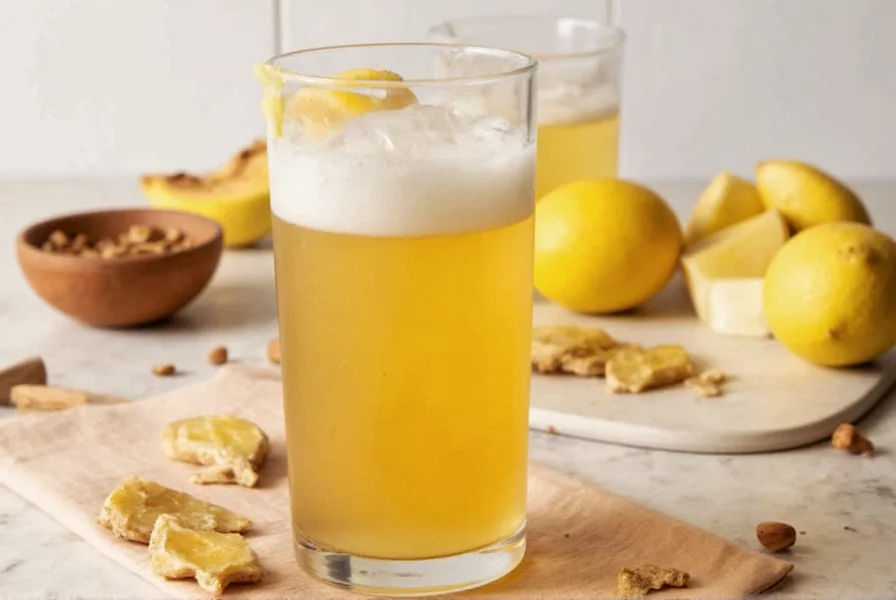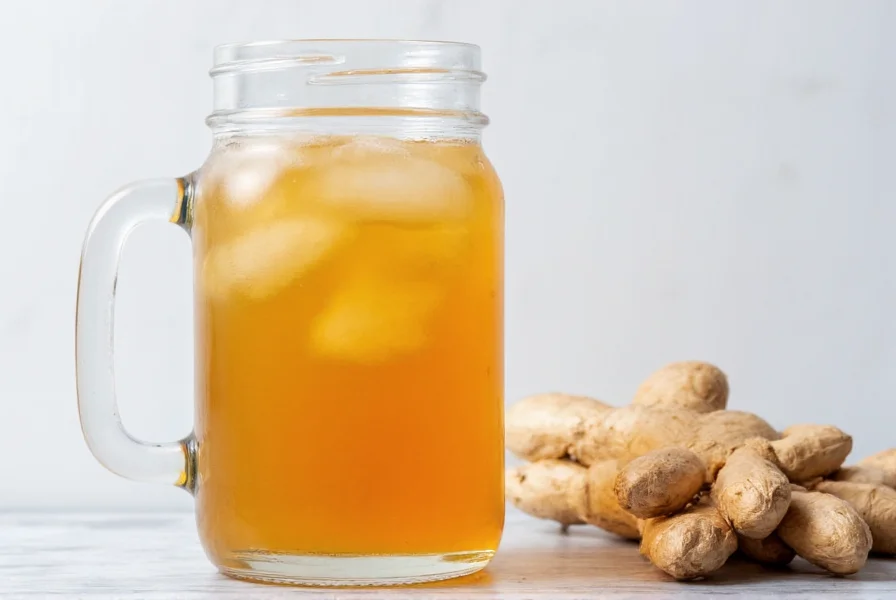Creating genuine homemade ginger ale requires understanding the fermentation process that gives this traditional beverage its distinctive spicy kick and natural fizz. The key difference between authentic recipes and simplified versions lies in the fermentation method, which develops both flavor complexity and natural carbonation without artificial additives.
The Science Behind Real Ginger Ale Fermentation
True homemade ginger ale relies on wild yeast or a ginger bug starter to convert sugars into carbon dioxide and trace alcohol. This natural fermentation process typically takes 2-5 days at room temperature. The resulting beverage contains less than 0.5% alcohol by volume when properly prepared, making it functionally non-alcoholic while delivering probiotic benefits and genuine carbonation.
Essential Ingredients for Authentic Homemade Ginger Ale
The quality of your ginger ale depends entirely on your ingredient selection. For the best results when making homemade ginger ale from scratch:
- Fresh ginger root: Choose firm, smooth rhizomes with tight skin (avoid shriveled or moldy pieces)
- Organic cane sugar: Provides food for fermentation without chemical aftertastes
- Filtered water: Chlorine-free water prevents interference with fermentation
- Ginger bug or champagne yeast: For reliable natural carbonation
- Lemon or lime: Adds brightness and balances ginger's heat

Step-by-Step Traditional Ginger Ale Recipe
This authentic ginger ale recipe yields a naturally carbonated beverage with complex flavor notes. Allow 5-7 days total preparation time for optimal results.
Phase 1: Creating the Ginger Bug (3-5 days)
- Combine 2 tablespoons freshly grated ginger, 2 tablespoons sugar, and 1 cup filtered water in a clean jar
- Cover with breathable cloth and secure with rubber band
- Feed daily with 1 tablespoon grated ginger and 1 tablespoon sugar
- After 3-5 days, you'll see bubbles forming - your starter is ready
Phase 2: Brewing the Ginger Ale (2-3 days)
- Simmer 2 cups grated ginger and 4 cups water for 20 minutes
- Strain and add 1½ cups sugar, stirring until dissolved
- Cool to room temperature (critical for proper fermentation)
- Add ½ cup ginger bug starter and juice of 1 lemon
- Pour into swing-top bottles, leaving 1-2 inches headspace
- Store at room temperature for 24-48 hours to carbonate
- Refrigerate to slow fermentation before serving
| Ingredient | Traditional Recipe | Quick Version |
|---|---|---|
| Ginger | 2 cups freshly grated | ¼ cup ginger syrup |
| Sugar | 1½ cups organic cane | 1 cup simple syrup |
| Fermentation | Natural (2-5 days) | Forced carbonation |
| Alcohol Content | <0.5% ABV | 0% ABV |
| Flavor Complexity | Rich, layered notes | One-dimensional |
Troubleshooting Common Homemade Ginger Ale Issues
Even experienced home fermenters encounter challenges when brewing ginger ale. Understanding these common problems helps perfect your technique:
- Flat ginger ale: Usually indicates insufficient fermentation time or temperature below 68°F (20°C). Extend room temperature storage by 12-24 hours.
- Overly alcoholic taste: Results from extended fermentation. Refrigerate immediately and reduce fermentation time in future batches.
- Cloudy appearance: Normal in traditionally fermented ginger ale due to natural sediment. Strain through cheesecloth before bottling for clearer results.
- Bottle explosions: Caused by overfilling or excessive sugar. Always leave 1-2 inches headspace and use proper fermentation bottles.
Health Considerations of Real Ginger Ale
Unlike commercial ginger ales that often contain artificial flavors and high-fructose corn syrup, authentic homemade versions preserve ginger's natural compounds. Fresh ginger contains gingerols and shogaols, compounds studied for their potential digestive benefits. The fermentation process also introduces beneficial microbes, though the exact probiotic content varies based on preparation method.
When prepared properly using the traditional ginger ale fermentation process, the beverage contains minimal alcohol (typically under 0.5% ABV), making it suitable for most populations. However, those with specific health conditions should consult healthcare providers before consuming fermented beverages.
Perfecting Your Homemade Ginger Ale Technique
Mastering authentic ginger ale requires attention to detail throughout the process. For optimal results in your homemade ginger ale recipe:
- Use a kitchen scale for precise sugar measurements
- Peel ginger with a spoon to preserve more flavorful compounds
- Experiment with secondary flavors like mint or hibiscus during the brewing phase
- Monitor carbonation levels by gently squeezing plastic test bottles
- Refrigerate immediately when desired carbonation is achieved
The best ginger for homemade ginger ale recipes comes from firm, plump rhizomes with smooth skin. Older ginger develops a woody texture and less vibrant flavor. For maximum ginger flavor extraction, grate rather than slice the root, as this exposes more surface area to the water.
Frequently Asked Questions
How long does homemade ginger ale last in the refrigerator?
Properly stored in airtight bottles, homemade ginger ale maintains optimal flavor and carbonation for 2-3 weeks in the refrigerator. The flavor continues to develop slightly during refrigeration, but carbonation gradually decreases after the first week. Always check for off smells or mold before consuming.
Can I make homemade ginger ale without any alcohol content?
Yes, you can create non-alcoholic ginger ale by using a quick method without fermentation. Simmer ginger, sugar, and water, then cool and force-carbonate using a soda maker. However, this version lacks the complex flavor development and potential probiotic benefits of traditionally fermented ginger ale.
Why is my homemade ginger ale too spicy?
Excessive spiciness usually results from using too much ginger or fermenting at too high a temperature. Try reducing ginger quantity by 25% in your next batch or maintaining fermentation temperature between 68-75°F (20-24°C). The heat also mellow slightly during refrigeration.
What's the difference between ginger ale and ginger beer?
Traditional ginger beer contains more ginger and sugar, resulting in a stronger, spicier flavor and higher potential alcohol content (up to 11% ABV). Ginger ale typically has a milder ginger flavor and lower sugar content. Commercial versions of both often use artificial flavors rather than natural fermentation.











 浙公网安备
33010002000092号
浙公网安备
33010002000092号 浙B2-20120091-4
浙B2-20120091-4